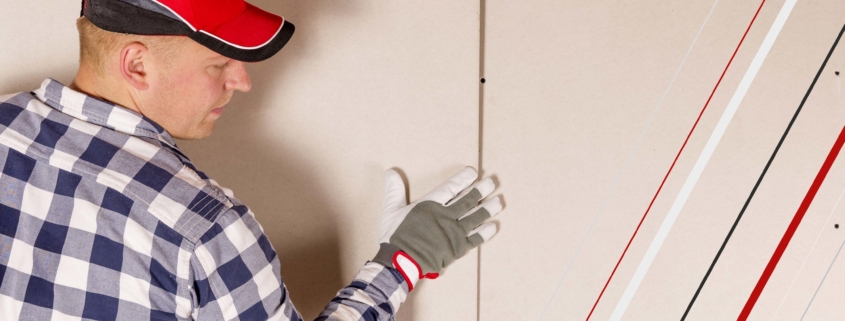Dry lining: what is it?
Dry lining is a form of cladding that prepares internal walls and, occasionally, ceilings, for painting or covering. A smooth surface is created by attaching plasterboard.
This method is quicker than plastering, which is a similar process. Dry lining also uses specialist materials which can save money and time. Plastering also uses more water than dry lining does, which is why the term is ‘dry lining’.
Why is it used?
Dry lining produces a similar result to plastering but is much quicker. Simply put, it produces a surface or wall that is ready to paint or cover. This method can hide wires and pipes, and can even provide sound boarding, and also create an insulation space.
Brickwork and uneven surfaces can be covered with dry lining, making it suitable for a range of applications. It can even create curved walls, which can be incredibly beneficial when dealing with small surfaces or unique spaces.
Dry lining can also be added to stud walls, which are often used in newer models of buildings.
Where can it be used?
Dry lining is usually used on internal ceilings and walls (such as uneven surfaces and brick walls) and on internal stud walls. There are two standard sizes of thickness of plasterboard that can be used, 9.5mm and 12.5mm, depending on the surface that the plasterboard is being fixed to.
In bathrooms and kitchens, dry lining can be used, but moisture-resistant plasterboard or specialist insulation must be used in order to combat the condensation that may be produced in these locations.
What materials can be used?
Plasterboard is the main material that will be used in the process, and this can come in many shapes and sizes. This is then affixed to produce the smooth surface. However, this isn’t the only material required. Nails, screws, and adhesives will also be used in the process.
The adhesive will be used to attach plasterboard directly to the internal wall using dabs of quick drying adhesive. This can be called the dob and dab method. Plasterboard can also be attached to timber or metal walls using nails. This technique is known as tacking. However, screws can hold plasterboard in place better than nails, so the screwing technique can also be used.
In order to cover nails or screws sticking out of the plasterboard, water can be mixed with a powder, which is then combined to make a paste and spread over the nails or screws. Once this substance dries, a smooth finish can be created by sanding it down. Tape can be used to cover any joints between the sheets of plasterboard.
What is plastering and why is it different?
A wet substance is used when plastering, that utilises different materials dependent on the required finish in order to cover a wall. It can then be covered over or painted when it dries. However, this method takes far longer, as the plaster takes far longer to dry. For some older properties though, plastering is preferred in order to maintain the style of the building. Architectural mouldings can also be created using the plastering technique, which cannot be done using dry lining.
In conclusion, there are many benefits to dry lining, and there are also some disadvantages, such as dry-lined walls being more subjected to damage.

